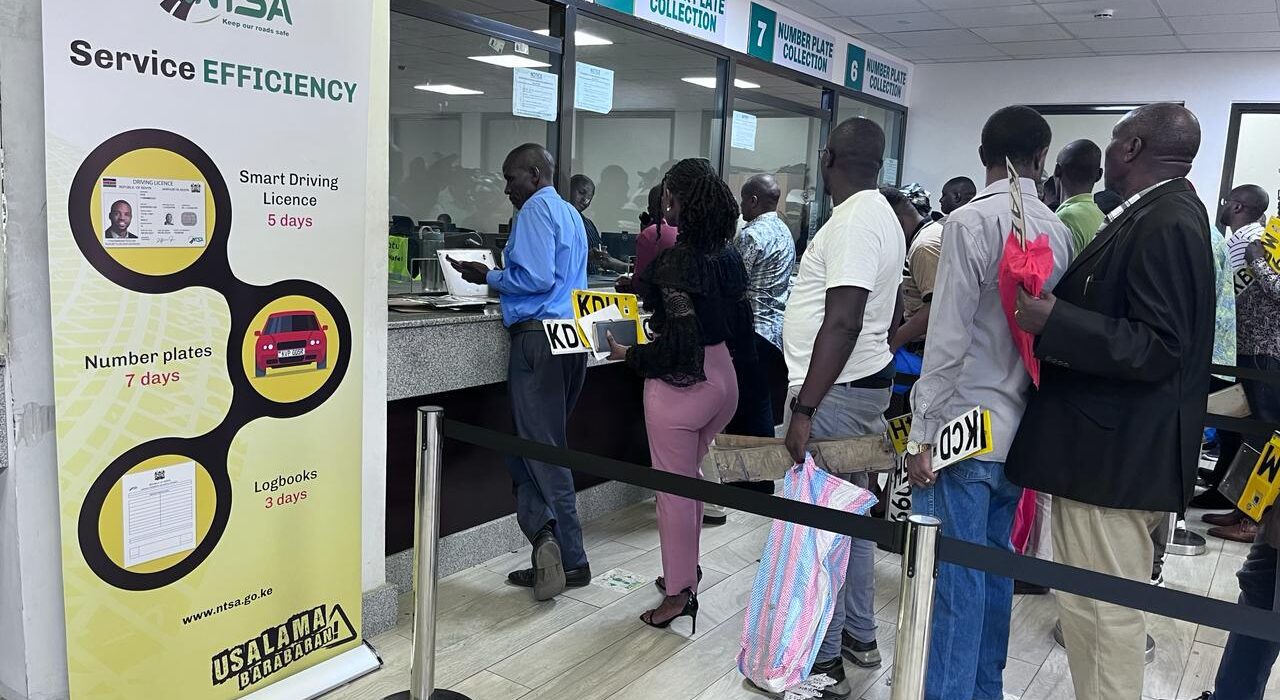In July 2025, the National Transport and Safety Authority (NTSA) rolled out a mandatory directive for all motor vehicle and motorcycle owners in Kenya to update their vehicle records and duty status. This initiative, driven by the NTSA Act No. 33 of 2012, aims to streamline vehicle registration, enhance transparency, and curb fraud in Kenya’s transport sector.
Why the NTSA Vehicle Records Update Matters
The NTSA’s vehicle records update initiative is a cornerstone of its broader mission to enhance efficiency, reduce fraud, and strengthen accountability in Kenya’s vehicle registry system. According to NTSA, outdated or inaccurate records can lead to issues such as delays in ownership transfers, logbook issuance, and vehicle inspections. This update ensures that all vehicles on Kenyan roads align with legal and administrative standards, supporting stakeholders like financial institutions, insurance companies, and government agencies.
Key Objectives of the Update
- Curbing Fraud: The initiative targets issues like logbook duplication and illegal ownership transfers, which have been prevalent in Kenya’s transport sector.
- Enhancing Data Accuracy: Accurate records ensure seamless transactions for vehicle financing, insurance claims, and resale.
- Streamlining Compliance: Updated records facilitate compliance with Kenya Revenue Authority (KRA) duty requirements and NTSA regulations.
- Supporting Digital Transformation: The new vehicle update tool aligns with NTSA’s push for digitalized services via the eCitizen platform.
Failure to update records could result in rejected ownership transfer applications, delays in logbook issuance, fines, or restricted access to NTSA services. With thousands of Kenyans relying on NTSA’s services daily, timely compliance is essential to avoid long queues and system congestion.
Documentation Requirements for Vehicle Records Update
To initiate the vehicle records update, NTSA requires specific documents to verify ownership and duty status. These documents must be submitted in person at an NTSA office, as the process is not fully online. Below is a comprehensive list of the required documents:
- Duty/Records Update Request Letter: This letter must include the vehicle owner’s contact details, specifically a phone number and email address. NTSA will stamp a copy of this letter as proof of receipt.
- Copy of the Owner’s Identification Card: A valid Kenyan national ID or passport is required to verify the registered owner’s identity.
- Original Vehicle Logbook: The logbook is essential for matching the vehicle’s physical and digital records.
- KRA Entry Document: This document verifies the vehicle’s importation or registration status with the Kenya Revenue Authority.
- Duty Payment Receipt: Proof of full duty payment is mandatory to confirm compliance with tax obligations.
Tips for Document Preparation
- Ensure all documents are legible and valid before submission.
- Make copies of all documents to avoid losing originals during the process.
- Double-check that the contact information in the request letter is accurate, as NTSA will use it to notify you of updates.
NTSA emphasizes that documents submitted to unauthorized persons or points will not be processed, and the authority will not be held liable for such submissions. To avoid scams, only deal with official NTSA channels.
How to Submit Documents for Verification
Unlike some NTSA services that are fully online, the vehicle records update requires in-person submission at an NTSA office. This ensures thorough verification of documents and reduces the risk of fraudulent submissions. Here’s how to navigate the submission process:
Step-by-Step Submission Process
- Visit an NTSA Office: Locate the nearest NTSA office (e.g., Nairobi, Mombasa, Nakuru, or other regional offices). A full list is available on the NTSA website (www.ntsa.go.ke).
- Present Required Documents: Submit the duty update request letter, ID copy, original logbook, KRA entry document, and duty payment receipt.
- Receive Stamped Letter: NTSA will stamp a copy of your request letter as proof of receipt and verification.
- Await Notification: NTSA aims to process the update within seven working days, after Reddywhich you’ll receive a notification to collect your documents.
Important Notes
- Processing Timeline: The seven-day processing period begins only after NTSA verifies and accepts all documents. Incomplete submissions will delay the process.
- Operating Hours: Document submission and collection are available Monday to Friday, 8:00 AM to 5:00 PM, excluding public holidays.
- Avoid Unauthorized Channels: NTSA warns against individuals or entities claiming to fast-track the process for a fee. Report such cases to the nearest NTSA office or the Ethics and Anti-Corruption Commission (EACC).
Document Collection After Processing
Once NTSA completes the verification and update process, you’ll receive a notification via the contact details provided in your request letter. You must collect your original documents from the same NTSA office where they were submitted. Here’s what you need to know:
Collection Requirements
- Stamped Request Letter: Present the stamped copy of your duty update request letter.
- Original ID: The vehicle owner’s original ID (national ID or passport) is required.
- Authorization Letter (if applicable): For organizations, an authorization letter specifying the person collecting the documents, along with their original ID, is mandatory.
Collection Details
- Timing: Documents can be collected Monday to Friday, 8:00 AM to 5:00 PM, excluding gazetted public holidays.
- Cost: The vehicle records update and verification process is free of charge, ensuring accessibility for all motorists.
If you’ve already updated your vehicle records and duty status, NTSA clarifies that you don’t need to repeat the process, provided all details remain accurate.
Applying for a Duplicate Logbook
After completing the vehicle records update, NTSA requires vehicle owners to apply for a duplicate logbook to reflect the updated duty status. This step is mandatory and must be done through the eCitizen platform. Below is a detailed guide to the application process:
Step-by-Step Guide to Apply for a Duplicate Logbook
- Log in to eCitizen: Access your eCitizen account at www.ecitizen.go.ke.
- Navigate to NTSA Service Portal: Select the NTSA service portal (new) from the dashboard.
- Select Motor Vehicle Services: Scroll down, click on “Motor Vehicle Services,” and select “View.”
- Choose Duplicate Logbook: Click on “Duplicate Logbook” and then “Next.”
- Specify Reason: Select “Duty Update” as the reason for the duplicate logbook.
- Upload Documents: Attach a colored PDF copy of the original logbook.
- Select Collection Office: Choose the NTSA office where you’ll collect the logbook.
- Enter Authorized Person Details: Provide details of the person authorized to collect the logbook, if applicable.
- Complete Declaration: Tick the declaration box, preview your application, and submit.
- Make Payment: Pay Ksh. 2,550 for the duplicate logbook via the eCitizen platform.
Key Requirements
- Duty-Free Logbook: Ensure the logbook reflects the updated duty status.
- Processing Time: The duplicate logbook is generated within three working days.
- Collection: Collect the logbook from the specified NTSA office with the same documentation required for original document collection.
Why a Duplicate Logbook?
The duplicate logbook ensures that your vehicle’s records are fully updated in NTSA’s system, reflecting the verified duty status and ownership details. This is critical for future transactions like vehicle sales, insurance claims, or inspections.
Common Challenges and How to Avoid Them
While NTSA’s vehicle records update process is designed to be straightforward, some motorists may encounter challenges. Here are common issues and tips to address them:
- Incomplete Documentation: Submitting incomplete or illegible documents can delay processing. Double-check all documents before submission.
- Unauthorized Agents: Scammers may pose as NTSA agents offering to fast-track the process. Always use official NTSA channels and report suspicious activity to info@ntsa.go.ke or the EACC.
- System Congestion: With thousands of Kenyans updating records, delays may occur during peak times. Submit your documents early to avoid long queues.
- Incorrect Contact Details: Providing inaccurate phone numbers or email addresses can result in missed notifications. Verify your contact information in the request letter.
For additional support, NTSA provides multiple contact channels:
- Email: info@ntsa.go.ke
- X: @ntsa_kenya
- Facebook: @NTSAKENYA
- In-Person: Visit any NTSA office for one-on-one assistance.
The Broader Impact of NTSA’s Initiative
The vehicle records update is part of NTSA’s ongoing efforts to modernize Kenya’s transport sector. Established under the NTSA Act No. 33 of 2012, the authority is responsible for registering and licensing vehicles, conducting inspections, and regulating public service vehicles. This initiative aligns with NTSA’s commitment to road safety and regulatory compliance, benefiting all road users.
Benefits for Stakeholders
- Individual Owners: Updated records ensure smooth transactions for vehicle sales, financing, and insurance claims.
- Financial Institutions: Accurate records facilitate vehicle financing and loan processing.
- Insurance Companies: Verified ownership data reduces fraudulent claims.
- Government Agencies: Streamlined records support tax compliance and fleet management.
- Vehicle Dealers: Updated records enhance transparency in resale transactions.
Addressing Systemic Issues
The update tool addresses longstanding issues like vehicle-related fraud, which has been a challenge in Kenya. For instance, posts on X have highlighted concerns about obsolete equipment at NTSA inspection centers, underscoring the need for digital solutions like the vehicle update module. By modernizing its systems, NTSA aims to reduce such inefficiencies and enhance service delivery.
The NTSA’s 2025 vehicle records update directive is a critical step toward a more transparent, efficient, and fraud-free transport sector in Kenya. By following the outlined steps—submitting the required documents, collecting updated records, and applying for a duplicate logbook—motorists can ensure compliance with NTSA and KRA regulations. The process, while requiring in-person submission, is free of charge and supported by a user-friendly online tool for subsequent steps like logbook applications.
To avoid delays or scams, prepare your documents meticulously, use official NTSA channels, and act promptly to beat the rush. For further guidance, visit www.ntsa.go.ke or contact NTSA via email or social media. By updating your vehicle records, you’re not only complying with the law but also contributing to safer, more accountable roads in Kenya. Don’t wait until the last minute—start the process today and keep your vehicle’s records in order.





